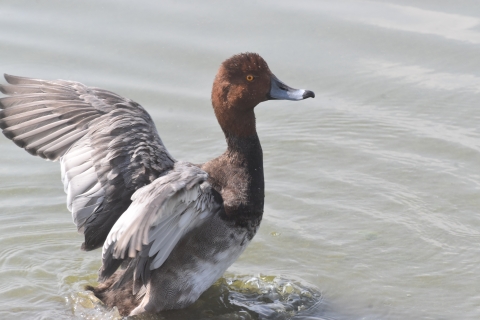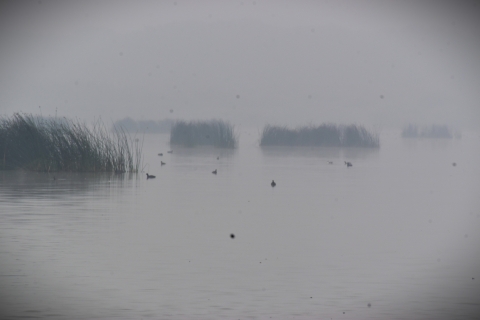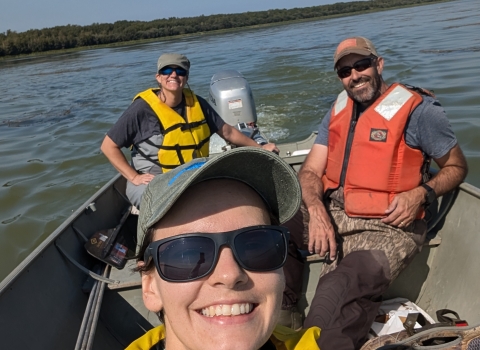Waterfowl Banding Operations is always an important detail that I try to participate in. Every year is different than the last and there are always some different difficult challenges to overcome. It still amazes me to this day how much I learn from this experience. Like always, an important step is checking your field gear before going out because you never know when you will see something fascinating. For example, we saw a gorgeous bull moose not 200 yards from the truck, but when we got out to take a picture the camera battery was dead. That still hurts. Or when we got out all the way to the first site only to realize we left our boots back at our cabin. One thing I learned this year was to never ask “what bird is that?” in the middle of wetland while taking down a trap, because someone could fall in. All “teachable moments” as my crew leader likes to call them. I even checked something off my bucket list this year - I finally got to see the Northern Lights.
Wow - it was that truly amazing! In all my years visiting this location, this was my first time seeing them. That’s just one of the reasons I enjoy this detail so much – I never know what’s going to happen.
The amazing thing to me is the amount of information and knowledge we learn from this detail. Last year, we kept catching the same brood of 15 redhead ducklings. By the end of the month, we banded all of them as they had grown up enough to take a band. This year in the same lake, we re-caught 5 redhead adults that just so happened to be from that brood. We caught them 1 year later almost to the day that they were banded. How wild is that? As we looked at all the other re-captures, they were all banded in the same lake and came back the next year. It’s like ducks know exactly where to go for all the good rest stops during the migration.
The information we learn from this detail is sometimes overwhelming. We even caught a few ducks that had some genetic discrepancies. For example, there was a female blue-winged teal that was almost silver and some of the adult males had half adult features and half juvenile features.It was so interesting and piqued our curiosity so much that whenever you heard someone say “What’s that?” we all stopped what we are doing and looked over and discussed what we were seeing.
This year’s crew consisted of Crew Leader Walt Rhodes, Pilot Biologist from Bend Oregon, Chris Romero, Legal Instruments Examiner from Albuquerque, New Mexico, Stephanie Bilodeau, Wildlife Refuge Specialist from Alamo, Texas, and me.Everyone was great, learned their information quickly, and it felt like our time just flew by way too fast. I have truly enjoyed this detail and hope I continue to participate in this opportunity!







